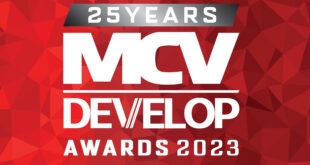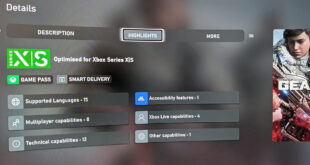Launching a game in your home territory is tough enough, but taking on regions you’re less familiar with can be an even more daunting prospect.
The key is understanding the barriers you face, and Patrick Yip, growth manager at OneSky, has compiled the following advice for tailoring your game to some of the world’s biggest markets.
East Asia
China, Japan and Korea have grown in importance recently due to their huge market size, but tapping these markets is very difficult.
East Asian languages are very different from English. Most sentences are short strings of square-shaped characters. As a result, sentences in these languages occupy screen-space very differently from text in English. You’ll need to make sure your interface can accommodate that change.
Also, the writing style is different. English writing prefers plain style, but that doesn’t work in languages like Japanese. Japanese writing prefers more elaborated forms of expression. Idiom and some formulaic expressions are welcome. Instruct translators clearly, and provide more contexts for the original text.
Localisation doesn’t end with translation. Visual items can be a serious concern. East Asian gamers prefer Japanese-looking art, but hesitate about Western art. You may need to adjust the style of your game in order to have great success in East Asia.
Partnering with a local design house could be an option. For instance, Puzzle Trooper had some manga makeovers before its launch in Asia. If the visual style received good response in East Asia, it probably works in other Asian regions such as Southeast Asia.
Distribution could be challenging. For instance, China’s Android app market is highly segmented. There are more than 200 third-party app marketplaces, while Google Play is not a major player.
Integrating to messaging apps can work, both as a distribution channel and retention strategy. The Chinese use Weibo and WeChat, while the Japanese and Koreans are addicted to Line.
South America
Expected to be the highest-growing mobile games market, South America has huge opportunities for games developers.
First, you should be even more careful about the languages. Latin America – known as LATAM – speaks Portuguese and Spanish, but these are not the same as their European counterparts.
Some translators or agencies will propose that you translate your game into a ‘neutral’ form of Spanish or Portuguese, in order to save money. We strongly recommend against this. ‘Neutral Portuguese’ or ‘neutral Spanish’ doesn’t really exist, and doesn’t reflect real-world experiences. You need to hire native translators from South America. And make sure you choose the right form of Portuguese or Spanish when submitting your app description to the local iOS and Google Play store.
You should also be aware that South America is, mostly, in the southern hemisphere, so the seasons are different. Christmas is hot. A school vacation in July can get pretty chilly. Keep an eye on references to weather or seasons in your game. It helps to ask your translator to pay special attention to climate-related content.
In addition to overcoming challenges in translation, you should also take a look at your mobile game’s spec requirement. LATAM is dominant with entry-level Android devices. Take Brazil for instance: according to Kantar Worldpanel, as of August 2014, Android controlled almost 90 per cent of the domestic smartphone operating system market. Therefore, not all of these smartphones can handle high-end games. Downgrading your game will help it run more smoothly on these devices. So will hosting a different APK file for the LATAM market.
Europe
In the European market, the challenge lies in the linguistic diversity. There are 24 official languages of the EU, while Switzerland alone has four. Each has its own grammar and character system.
Your game’s source code must do internationalisation very well. Apart from extracting your strings from the source code, you must ensure that the infrastructure is compatible with various grammar rules in European languages.
Grammatical gender and plurality is a common issue. German has three forms of gender, Polish four forms of plurality. You may need to refer to the Unicode standard and structure your code accordingly.
To bring your game to Europe, you have to work with a couple of translators. Forget about email and spreadsheet. Use a translation management system to automate the localisation workflow and smoothen the communication process.
In general, give flexibility to translators to adjust content for the target market. Allow them to bring their own creativity and communicate with them closely.
[OneSky provides a platform for apps and games like HonorBound, QuizUp and Badland to order and manage professional translations in 40+ languages. www.oneskyapp.com]
 MCV/DEVELOP News, events, research and jobs from the games industry
MCV/DEVELOP News, events, research and jobs from the games industry



